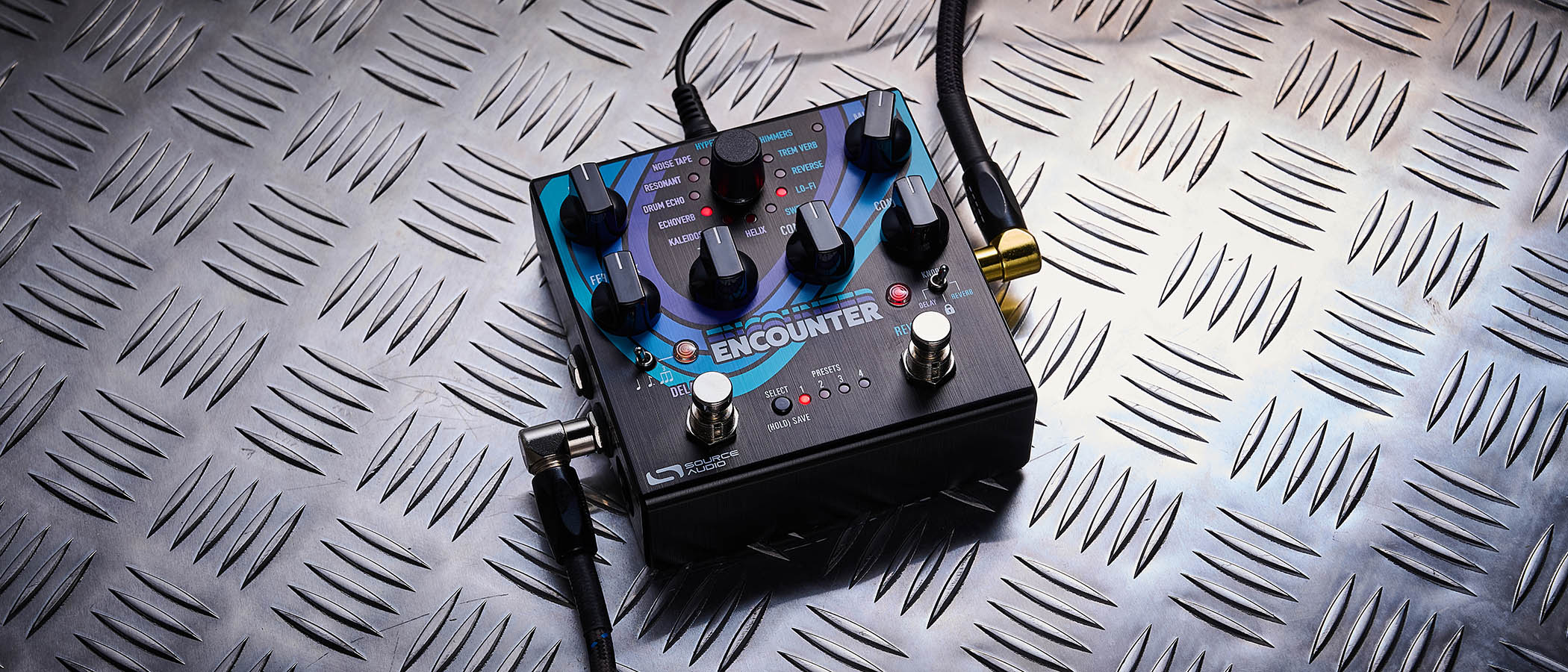“The big thing was the neck shape that Clapton wanted. We made about a dozen neck samples for him to play”: From Slowhand’s Strat to “tongue-in-cheek” relics, this is the hidden history of the Fender Custom Shop
Fender’s Custom Shop had a precarious start in the mid-1980s, but the story of its formative years is full of big ideas, some bizarre instruments, and a queue of famous guitarists

A customer walks into a shop. Nothing unusual about that, did you say? Well, the customer talks to the man behind the counter. And that man is Leo Fender. The customer has an acoustic guitar but wants to be able to plug it into an amp. He’s heard Leo might be the guy to make it happen.
This apparently unimportant event happened around the start of the 1940s at Leo’s Fender Radio Service store in Fullerton, Los Angeles. But this walk-in would result in a guitar with a retrofitted pickup – in other words a customised guitar. And all this happened many, many decades before the Fender company opened an official Custom Shop, and indeed a number of years before the Fender company even existed.
Of course, Leo himself wouldn’t have described that instrument as a ‘custom guitar’, not least because the term hadn’t been invented yet. However, he did create a special piece for a specific customer, which is where the term ‘custom’ originates from.
What makes a guitar a custom guitar? It has to be individual, set apart from regular production models. There’s an emphasis on the handmade aspects of guitar making, and sometimes personal attention from a named builder.
Sadly, there will also be a difference when you come to pay the bill. But let’s get back to Fender, a company now under way and gradually picking up business as the ’50s loomed ahead.
Customarily Colourful
As Fender began to grow into the early ’50s, and with the addition of the Tele, P-Bass and Strat expanding beyond the firm’s original steels and small amps, the emphasis remained firmly on production of a set line of distinct models. Each of those models was offered in a standard finish, either blonde or sunburst.
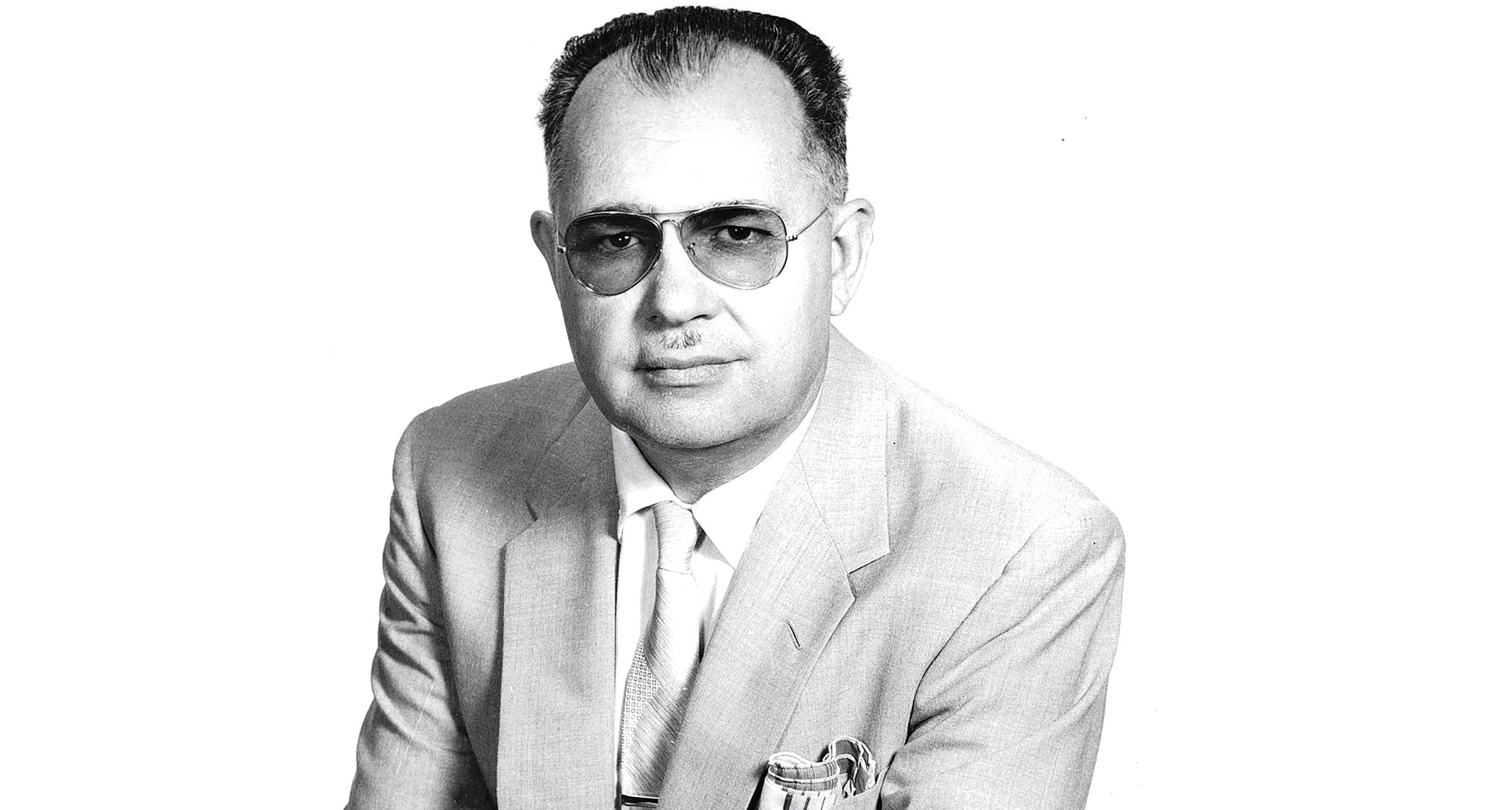
Any notion of customising at Fender in the ’50s was largely confined to non-standard colour finishes. This happened on a casual basis, and sometimes it was for local musicians who deserved something special.
All the latest guitar news, interviews, lessons, reviews, deals and more, direct to your inbox!
For example, Bill Carson and Rex Gallion, who helped with the advent of the Stratocaster, were awarded splendid red-finish Strats for their trouble, while Eldon Shamblin of the famous Western swing band led by Bob Wills landed an even more impressive gold-finish model.
As the ’50s rolled on, Fender began to hint publicly yet discreetly in its catalogues and price lists at the availability of colour options, at first at “an additional five per cent cost”. You may want to sit down for the next piece of information. That small price uplift meant a gorgeous brand-new Custom Color Strat could have been yours in 1957 for a few cents short of $288.
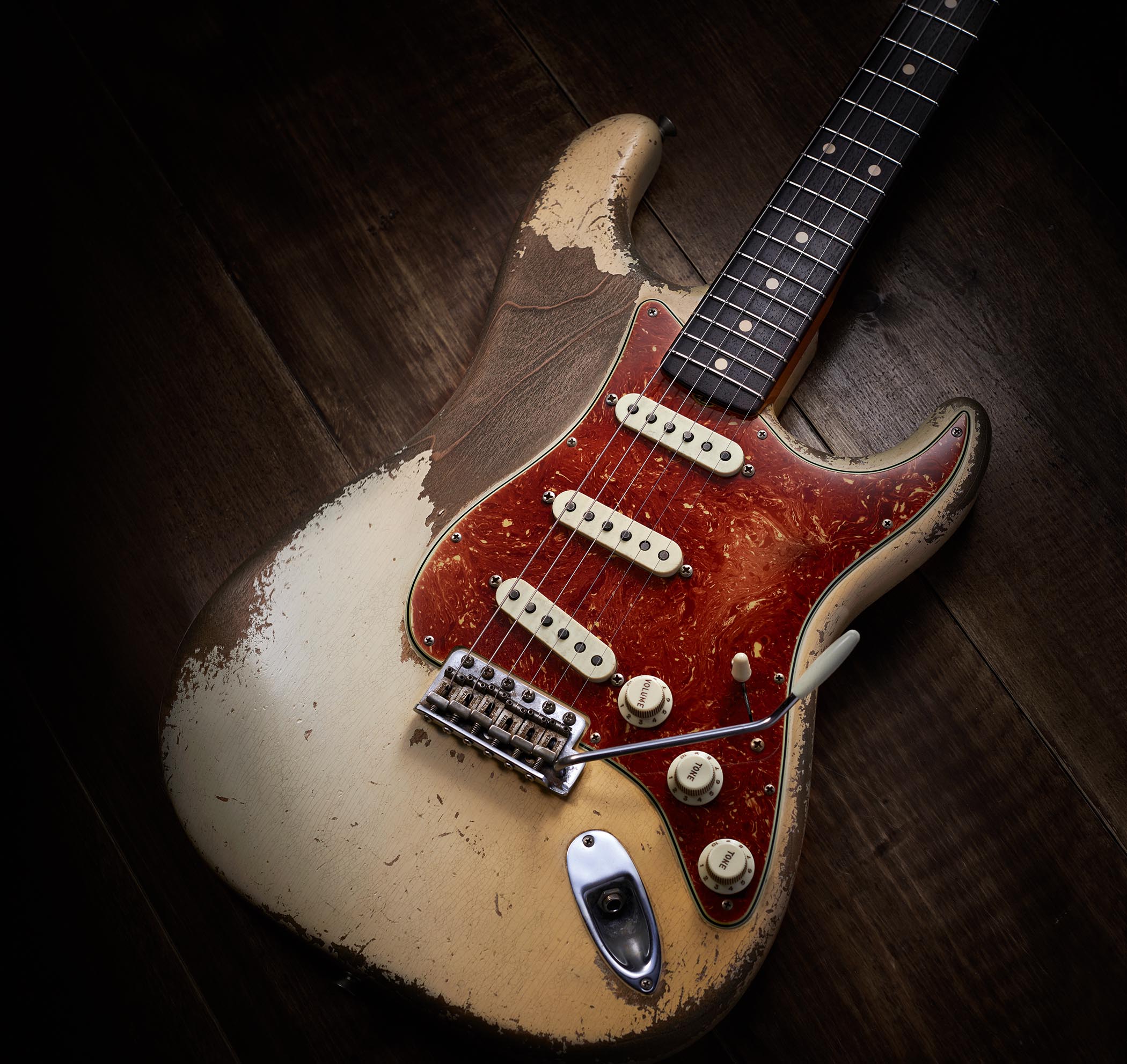
There was more. First seen on an early ’57 price list was a “Stratocaster (with tremolo) in Blonde with 14 Carat Gold-Plated Hardware” and a price of $330. This was the model that became known as the Mary Kaye, thanks to the Detroit-born singer and guitarist who appeared with just such a blonde-body/gold-hardware Strat in a series of photos that ran in Fender promo material.
Kaye appeared in the movie Cha-Cha-Cha Boom!, released late in 1956 and with three featured performances where she played that now-famous Strat – a guitar she never possessed for longer than a few hours at a time.
Beyond these rare early sightings, Fender eventually came up with a defined list of officially available Custom Colors, and in the ’60s, when the firm was making many more coloured guitars, it issued colour-chart pamphlets to publicise and help select the various shades, from Dakota Red to Shoreline Gold Metallic, Daphne Blue to Teal Green Metallic. It was an early sign that custom choices could be made to work for a mass-production maker.
Custom Preludes
Long before Fender had its own official Custom Shop, some guitars were nothing like production Strats, Teles, Jags or Jazzmasters, and therefore qualify as early examples of Fenders that might deserve the custom name.
One such was a Jaguar specially built by Fender for a ludicrous 1963 movie called Bye Bye Birdie. In it, a rock ’n’ roll star briefly strums a luscious black-finish Jag that sparkles with gold fittings and has a body decorated to incorporate his (fictional) name – Conrad Birdie. 60 years and more later, however, we are still awaiting a Conrad Birdie signature Jag.
Later in the decade, Fender’s maverick designer Roger Rossmeisl was let loose on the short-lived Montego and LTD, introduced in 1968. They were archtop electrics, quite the antithesis of Fender’s regular fare, although both kept the customary bolt-on neck. Rare and unusual – so certainly candidates for early custom models.
CBS had been Fender’s new owner since 1965, and evidence of the new overseer wringing every drop of potential income from the factory came with the Swinger and the Custom. That’s right: one of them was called the Custom, the first time Fender had used that word as a model name since the double-bound Custom Tele and Esquire of 1959.
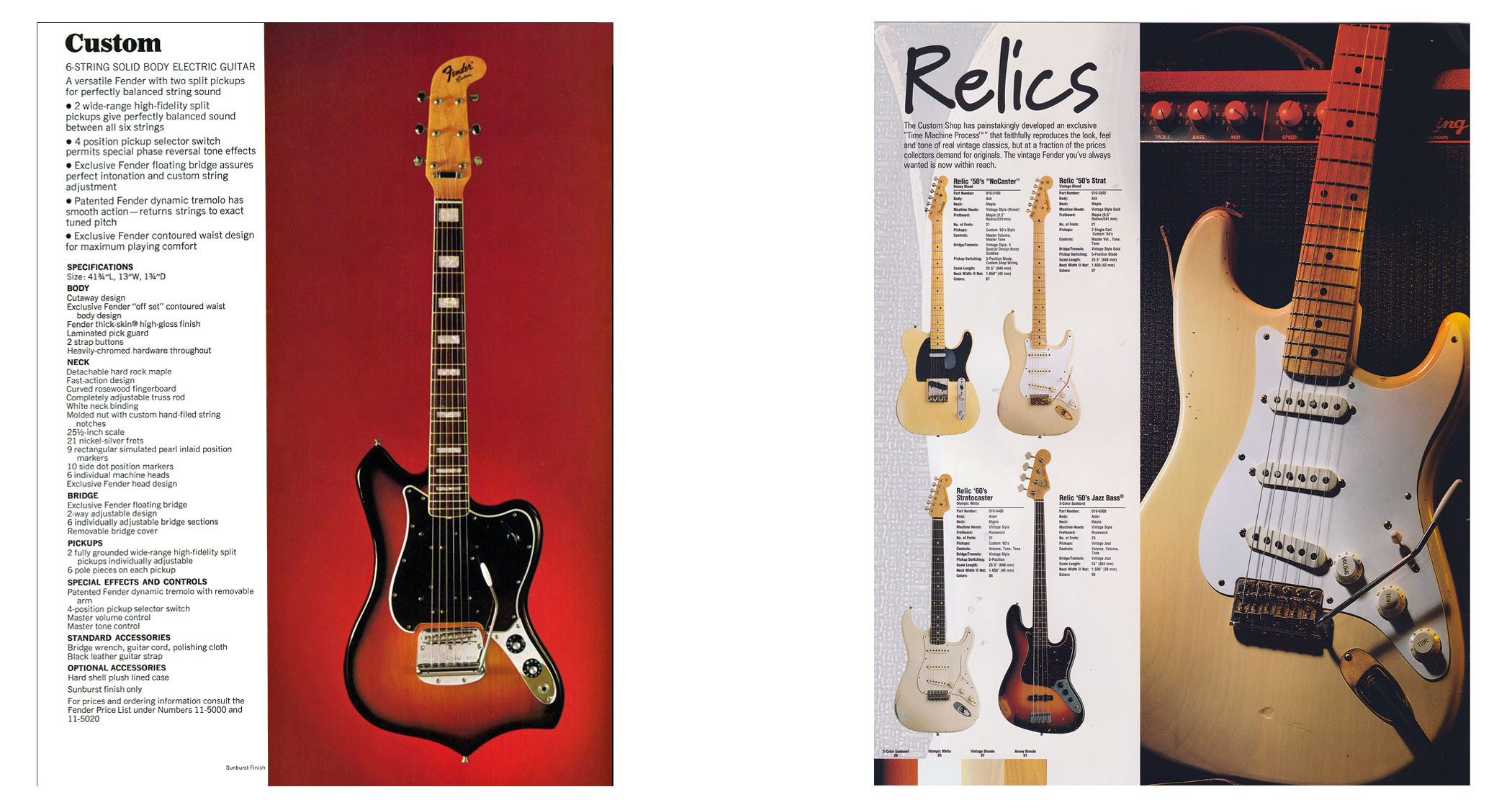
Following pressure from CBS to stop wasting spare parts, Fender’s product manager created the Swinger by teaming unused Musicmaster or Bass V bodies with unpopular short-scale Mustang-style necks, and the Custom (aka Maverick) by converting disused Electric XII necks, bodies and pickups.
Both were shortlived, but the idea that it’s possible to rearrange existing materials and styles into something new and potentially successful would become central to at least one strand of custom building.
Fender’s UK distributor
CBS/Arbiter opened the Fender Soundhouse superstore in London in 1973, and the boss, Ivor Arbiter, invited a sculptor friend Jon Douglas to come up with something unusual. He made a replacement Strat body from cold-cast bronze, with a metallic layer over a fibreglass shell.
A small batch of these Rhinestone Stratocasters was offered for sale at the Soundhouse in ’75, but a fire destroyed the premises soon afterward. Apparently, two had already sold, but the rest probably perished in the flames.
Douglas would make fresh moulds for a further small run in the early ’90s, but the originals were arguably the first of Fender’s “art guitars”, a category that would later find a suitable home at the Custom Shop.
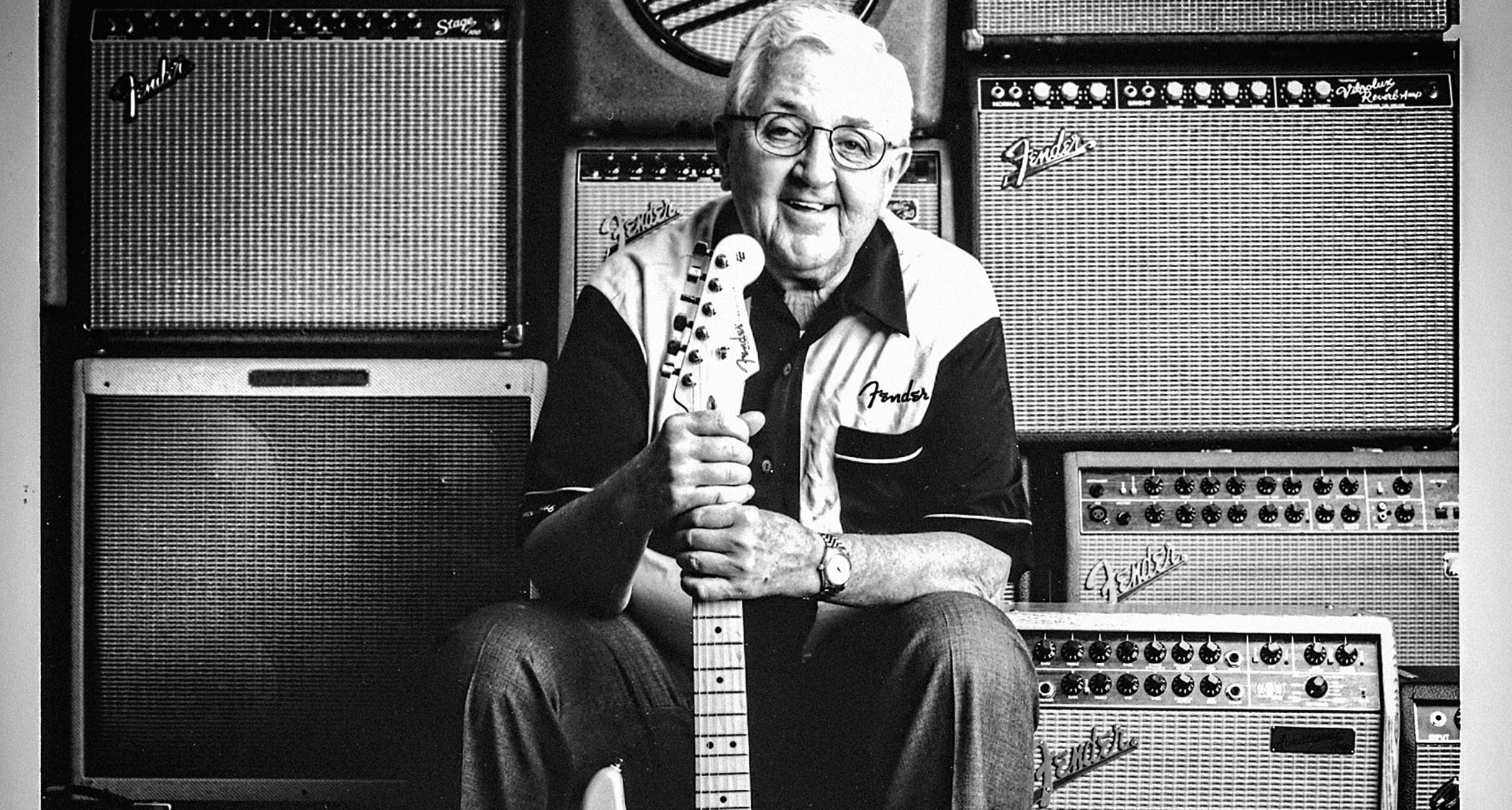
What We Need Is A Custom Shop
At the start of the 1980s, CBS management needed fresh blood to energise Fender. The brand’s income had climbed spectacularly – in 1980, it tripled 1971’s figure of $20 million – but reinvestment in the company had wavered and Fender’s reputation for quality was in poor shape.
In 1981, CBS headhunted an experienced team from the American musical-instruments division of Yamaha – Bill Schultz, Dan Smith, John McLaren and Roger Balmer – who joined Bill Mendello from the existing setup, all charged with guiding the firm to better things.
The following year, the new team created Fender Japan, a joint venture with two Japanese distributors. Fender USA licensed Fender Japan the right to have Fender guitars built in Japan – initially only for sale on the Japanese market – which led to the first Japanese Fender vintage reissues and the Squier line of guitars.
However, the improvements were not enough for CBS, and in 1984 it put the Fender name and business up for sale. There were several bidders, but the Mendello/Schultz/Smith/Balmer team won, and in January ’85, almost exactly 20 years since the corporation had acquired it, CBS confirmed it would sell Fender to “an investor group led by William Schultz, president of Fender Musical Instruments”.
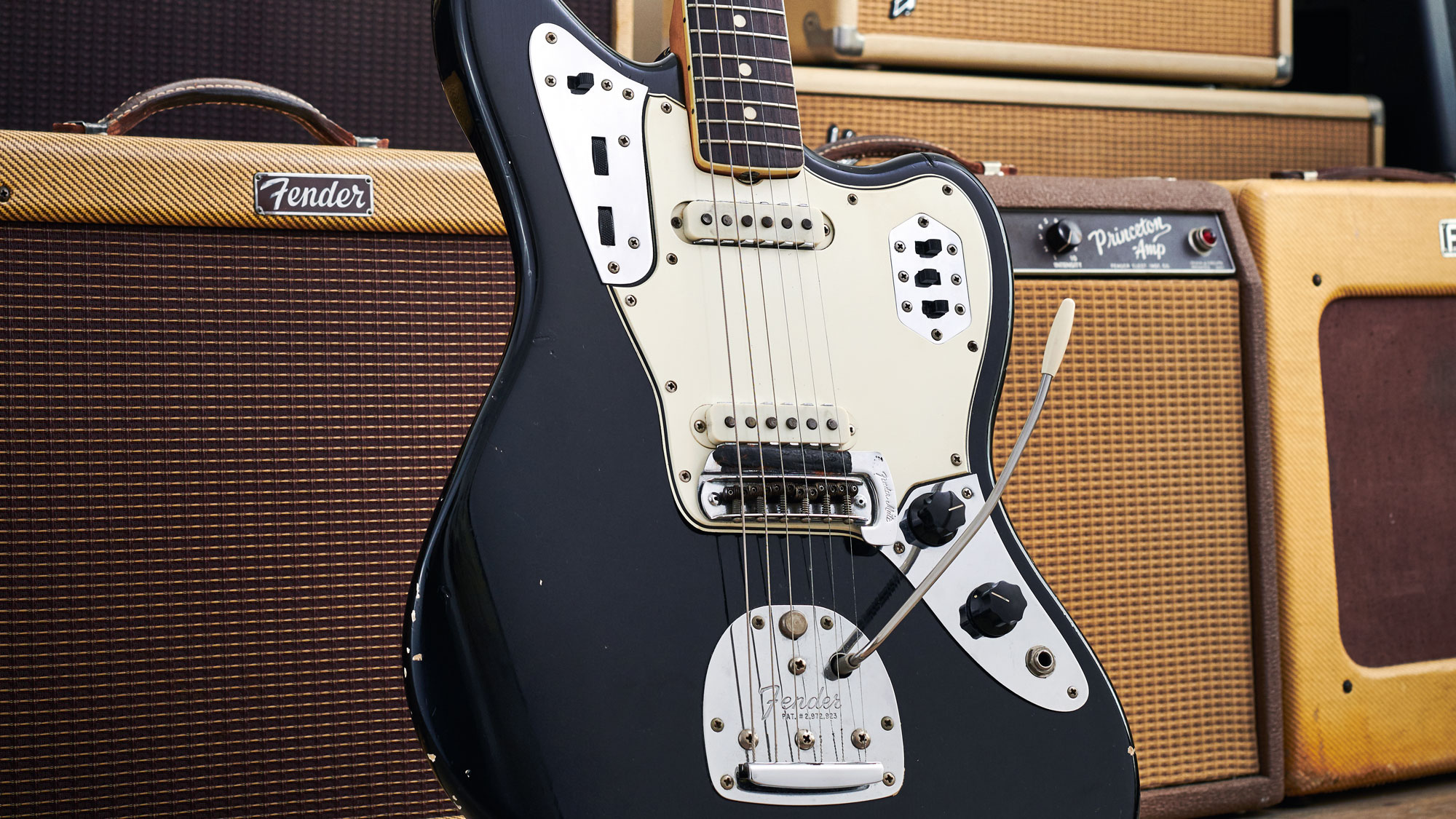
It was during the months and years of upheaval and uncertainty following the management buyout that Fender’s official Custom Shop was born. The intention at first was for a facility that would build one-offs and special orders for players with the money and the inclination.
Dan Smith said that in the absence of the Fullerton factory, which was sold separately from the Fender name and business, the buyout team reckoned their limited resources would stretch perhaps to making just 10 vintage reissues a day at their small new premises in Corona (about 20 miles east of the defunct Fullerton site).
Meanwhile, the revived Fender operation’s primary source of production guitars was from the Japanese Fuji-Gen Gakki factory via the Fender Japan deal. “So we were going to start a Custom Shop at Corona to build special projects for artists,” Smith explained, “to make certain that the prestige was still there for the company.”
Artist Specials
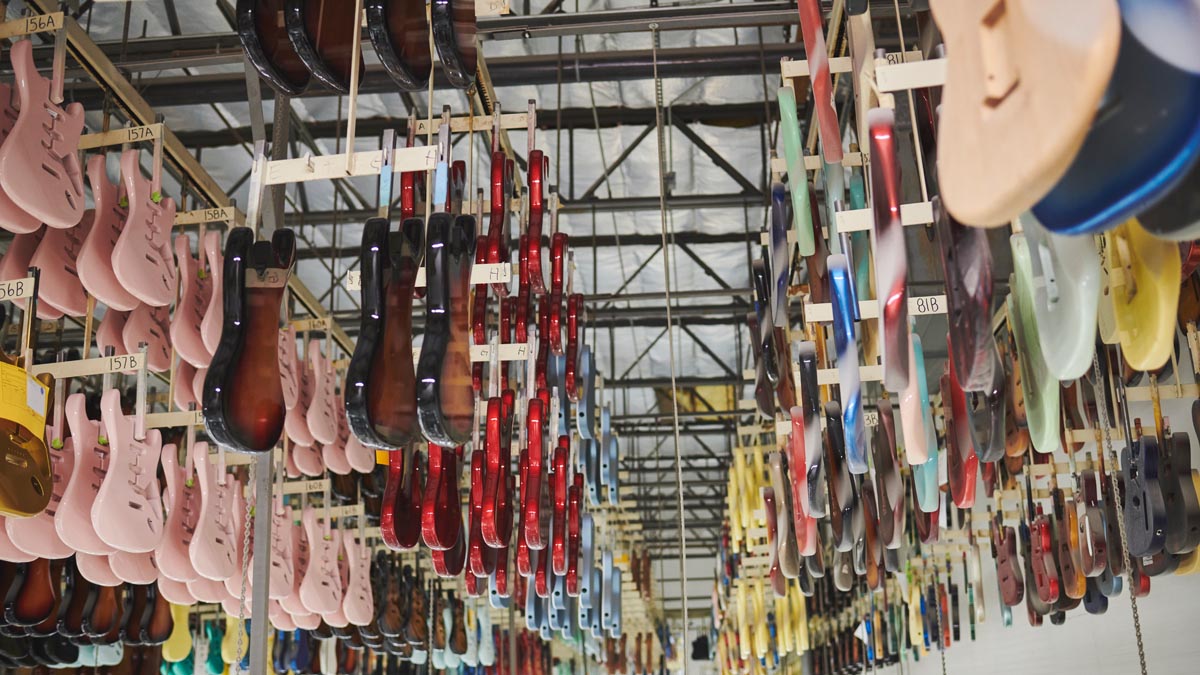
George Blanda was the guitar builder hired by Fender in 1985 to make special guitars for artists, effectively starting the idea of a Custom Shop. An early job led to one of Fender’s first signature guitars, the Eric Clapton Stratocaster.
Clapton had discovered that his faithful old ‘bitsa’ Strat, Blackie, was coming to the end of its useful life, and he began discussions with Fender about a modern replacement.
“The big thing was the neck shape that Clapton wanted,” Blanda recalled. “Dan Smith and I made about a dozen neck samples for him to play. He ended up liking two and couldn’t quite decide between them: one was like a pre-war Martin he had, with a very deep V shape; the other was a kind of soft ‘rounded V’ like Blackie, whose neck had become pretty thin through so many refrets.”
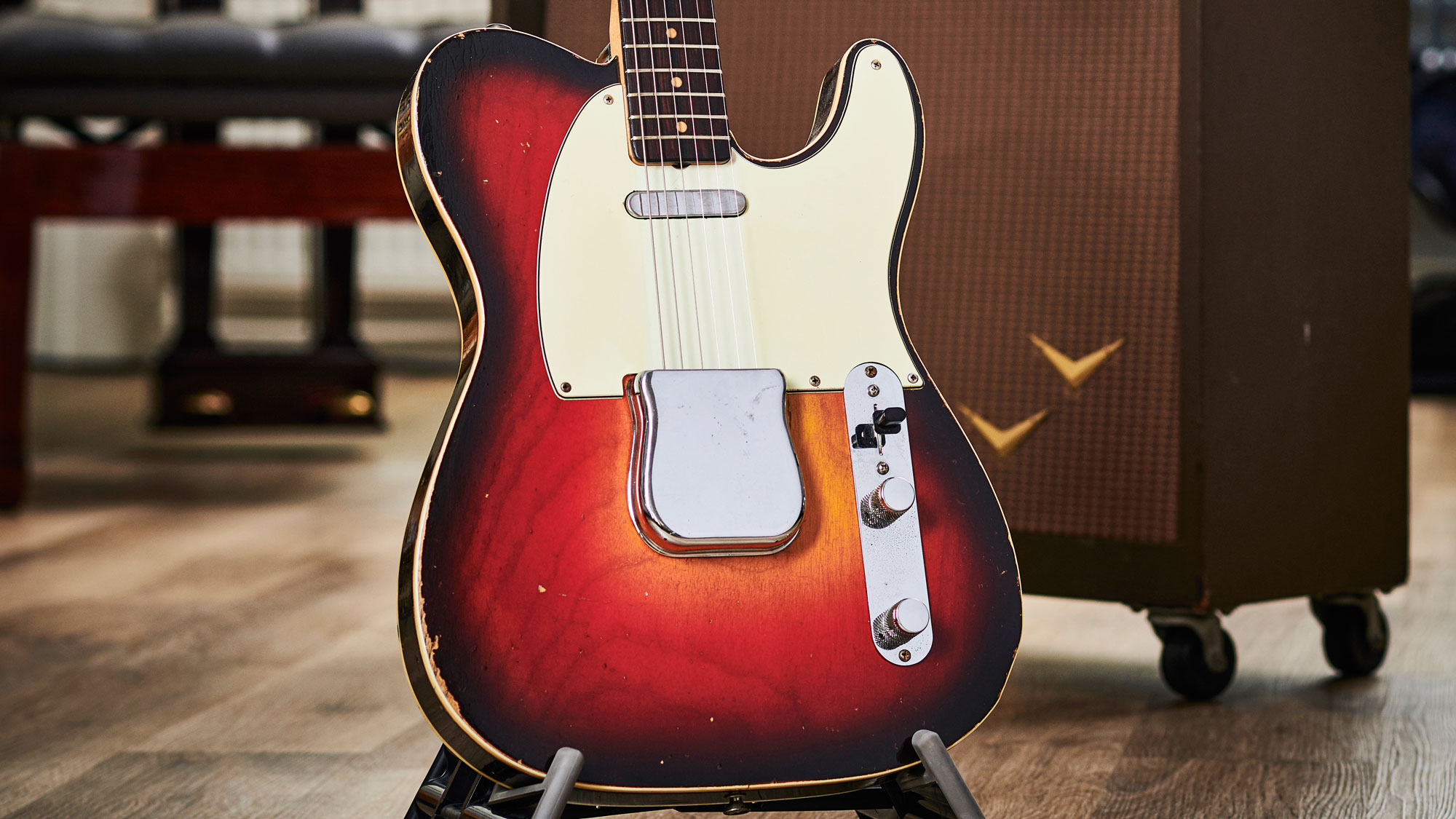
Fender had given Clapton one of its Elite Strats a few years before, and he liked the sound of the guitar’s active circuit. He wanted something similar but with more boost, which he called compression. With all this in mind, Blanda and Smith delivered prototypes to Clapton in 1986.
“Then he was on the road for some time, over a year, and we didn’t hear much back,” Blanda said. “At some point, he had a problem with the prototype he had been playing most, the one with the neck like the Martin with the deep V, and he sent it back to us to be fixed.
“We had done all our drawings and tooling and were ready to make this deep-V guitar for him, but then he started playing the other one, like Blackie – and said, ‘Yes, I like this a lot better.’ So we ended up changing back to that for the signature model! It was a very long process because he was on the road so much – his career was having a renaissance.”
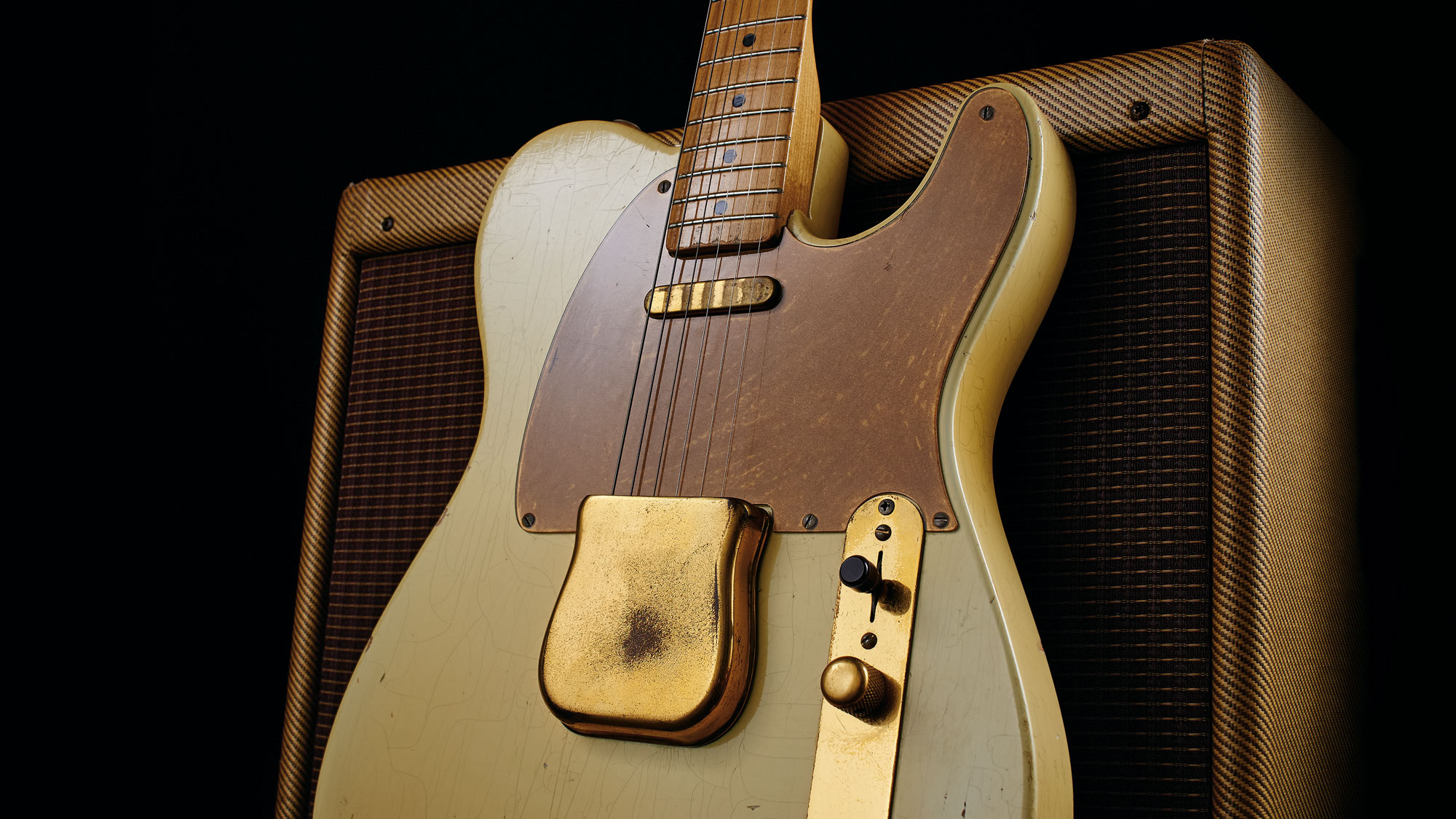
The final design eventually went on sale to the public in 1988 as a regular Fender factory model, the Eric Clapton Stratocaster. Clapton retired Blackie around this time and soon began playing his new signature models. (An actual Custom Shop Clapton Strat would have to wait until 2004, when it joined other Custom Shop signatures such as the Albert Collins Tele and the Ritchie Blackmore Strat.)
At Last: A Custom Shop!
George Blanda moved to R&D and that left the idea of a Custom Shop up in the air. Fender had discussions with guitar maker Michael Stevens and with Fender’s former R&D man John Page, who had left the company a year earlier to concentrate on his music.
The result was that in January 1987 Stevens and Page joined up to properly start Fender’s Custom Shop, gaining space later that year in an area within the Corona factory and later moving to various separate Corona buildings nearby.
One of the Shop’s first official orders was to make two left-handed guitars for Elliot Easton of The Cars, a Thinline Tele in Foam Green and a ’57 Mary Kaye Strat.
The order was placed at the end of February 1987 and completed by John Page later that year. Other guitarists who lined up for the Shop’s work in its early months included Robert Cray, Steve Cropper, Jerry Donahue, Robben Ford, Eric Johnson, Yngwie Malmsteen, Cesar Rosas, Arlen Roth and Keith Scott, along with a slew of switched-on Fender dealers.
The Shop turned out its first numbered limited edition, the 40th Anniversary Telecaster, in 1988 (a few years early – vintage lore knew no better at the time).
Another historic moment marked by the Shop was the Pine Telecaster & Amp set, issued in a limited edition of 50 in 1996 to celebrate the 50th birthday of the Fender company. The set recreated the original solidbody prototype, with its steel-like headstock shape and angled control plate, alongside a replica of an early Model 26 amp.
More guitar builders were added to the Shop’s growing staff. Fred Stuart’s Egyptian Telecaster, made in 1994, was the first Custom Shop art guitar. Stephen Stern took responsibility for the D’Aquisto hollowbodies when they moved that same year from Japanese production to the Custom Shop. And around the same time, Larry Brooks helped Kurt Cobain create the Jag-Stang from cut-ups of his fave Jag and Mustang.
The expansion of the Custom Shop’s business prompted various moves, notably in ’93 to new buildings still close to the Corona factory, providing extra space and a shift to better efficiency. When Fender’s new plant on Cessna Circle in Corona was unveiled five years later, the Custom Shop moved there.
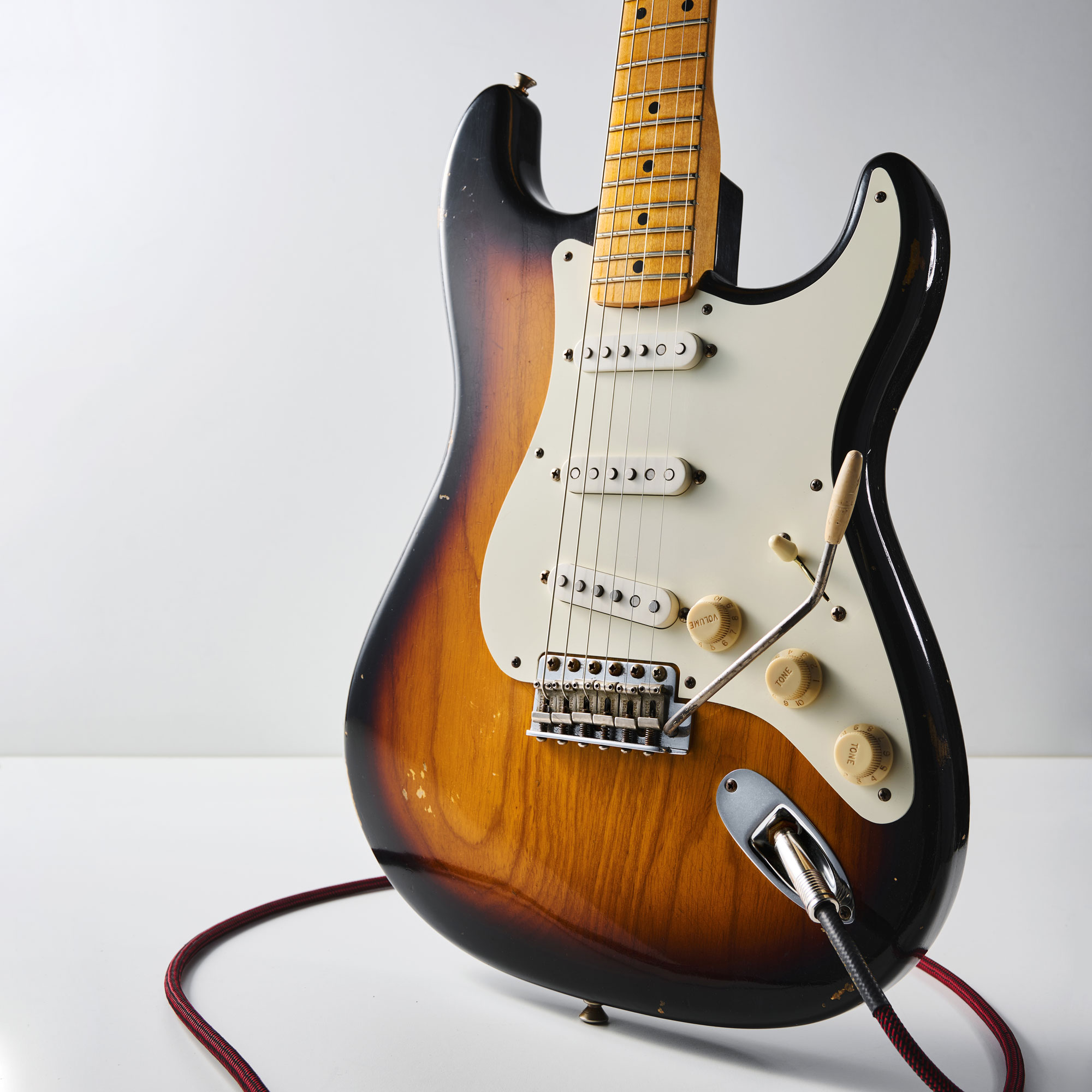
Ageing Gracefully
JW Black had started at the Custom Shop in 1989, and one day he saw a Strat that a friend of his, Vince Cunetto, had made with an aged finish. He showed it to John Page and they agreed it was interesting. Black suggested offering aged replicas, called Relics, as a regular line in the Custom Shop catalogue.
“It started almost as a tongue-in-cheek thing,” Page said, “like worn-in Levi’s or something. It would look cool – and in the first three rows, it would look like you’re playing a valuable Nocaster. But only you know that it’s not really. That was how it started.”
Black and Cunetto set about making a couple of aged ’50s-style guitars as samples. One was a Nocaster, the transitional Broadcaster/Telecaster with removed model logo, the other a Mary Kaye blonde-and-gold-metalwork Strat.
Fender took them to the winter ’95 NAMM Show and displayed them like works of art. Page said: “Visitors would come along and say, ‘Oh, that’s really cool: you brought original ones as a tribute.’ And we were saying, ‘Er, yeah – how many do you want?’ People went nuts! It was amazing.”
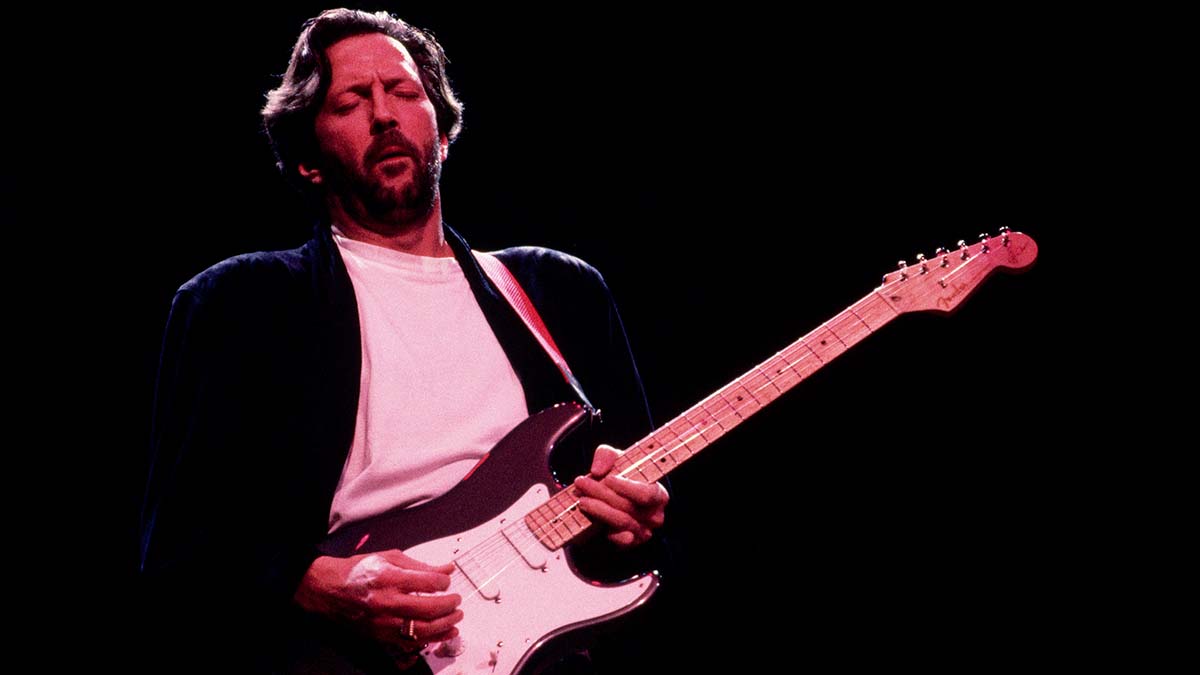
Back at the Custom Shop, plans were quickly under way to offer an initial line of a Relic Nocaster and a few ’50s and ’60s Relic Strats, and this soon expanded to include a ’60s Jazz Bass and options of various sunbursts and colours.
Normally, I tell people if they can’t tell the difference when they pick up and play the guitar, then they should buy the cheaper one
John Page
Cunetto and a small team started work in the summer of ’95 at his workshop in Missouri, receiving bodies, necks and parts from Fender, shooting nitrocellulose lacquer and then setting about the ageing processes. The pieces would then be returned to the Custom Shop for final assembly and setup.
Fender moved everything in-house and introduced the Time Machine series in 1999: the Relic (heavily worn); the Closet Classic (as if played a few times and then forgotten in a cupboard); and the NOS (New Old Stock, as if bought in the ’50s or ’60s and then magically transported to today).
By now, the Shop had a growing catalogue of regular items, aside from the one-off work, and in 1996, as well as four Relics, it comprised 12 Namesake (signature) guitars, six Set Neck and Contemporary models, and no fewer than 28 vintage-style Custom Classics, plus six amps. At the start of the 90s, the Shop built about 2,500 guitars a year; by ’96 that had risen to 7,000.
What’s The Difference?
Custom Shop boss John Page talked to this author in the early ’90s about the types of instruments his team were producing at the time. “There are the absolute vintage reproductions,” Page said, “and we’ve found that people want everything just so. Obsessive, almost. But great, you know?
“One example: Elliot Easton had a ’62 or ’63 left-handed Burgundy Mist Strat that was, like, priceless. He wanted to play it, but he didn’t want to play it – you know what I mean? So we duped the guitar for him and he liked it so much better that he sold the original.”
Relicing started almost as a tongue-in-cheek thing, like worn‑in Levi’s or something. It would look cool
John Page
Next up in our ’90s chat about Custom Shop categories were what Page called quasi-exact reproductions. “Anything where the guy doesn’t necessarily want to be exact – he wants it to be close and he wants that vibe. He wants to stand on stage and make it look like it’s a ’50s Esquire, but he wants a fatter neck, hotter pickups… so that’s another vein.”
As for the Shop’s one-offs, Page reckoned the sky was the limit. He recalled leather-tooled body covers, checkerboard binding, B-Benders, a 30-inch-scale Telecaster, an electric banjo with pedal-steel tuners on the floor, eight-string Strats, quilted-maple Jazzmasters with Floyd Roses, bizarre headstock inlays, and many, many more examples in out-there territory.
“Oh, and did I mention the Rocketcaster? That was a three-tone Jazzmaster that looked like an old ’50s Oldsmobile, all the brass handmade, lots of chrome strips, and the knobs off a Rocket 88 cigarette lighter.”
Page left the Custom Shop in 1997, and Mike Eldred took over the running of the place. But one of the questions Page had to answer regularly when he was there concerned the difference between a factory Fender and a (much more expensive) Custom Shop Fender.
“Normally, I tell people if they can’t tell the difference when they pick up and play the guitar, then they should buy the cheaper one,” Page said, smiling.
But he knew that for people who could tell the difference, it was like night and day. “I had a couple of gentlemen here yesterday that I was showing an instrument to,” Page said in that ’92 interview. “They were asking what we were doing on a particular model – they were businessmen, not players. They took a look at the guitar, and I can tell in their eyes it’s like, ‘Well, this looks like everything else.’
“And yet two days before that, I had a couple of players in here, and they asked the same question. I handed them the guitar and they just about creamed themselves. They couldn’t quit playing it.”
- This article first appeared in Guitarist. Subscribe and save.
You must confirm your public display name before commenting
Please logout and then login again, you will then be prompted to enter your display name.



